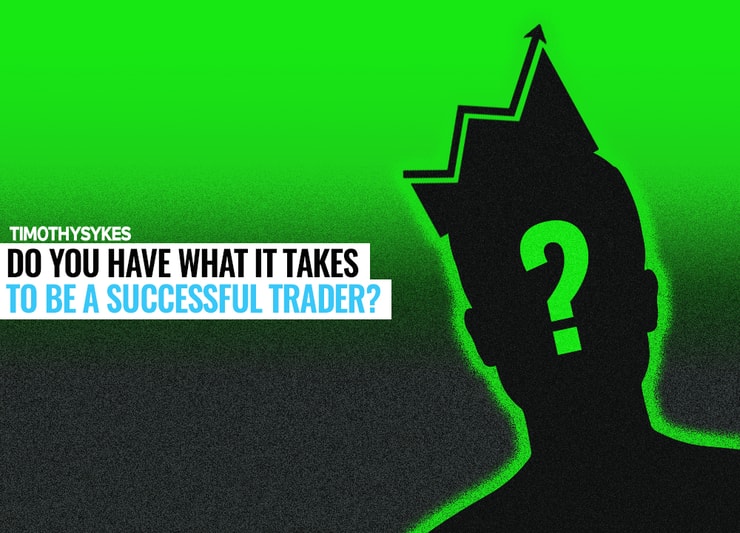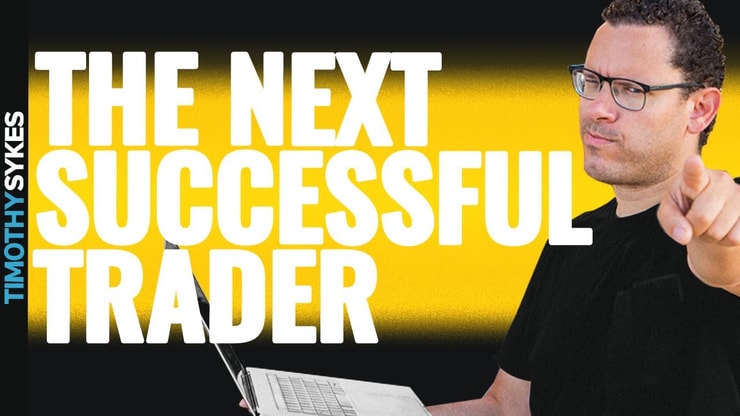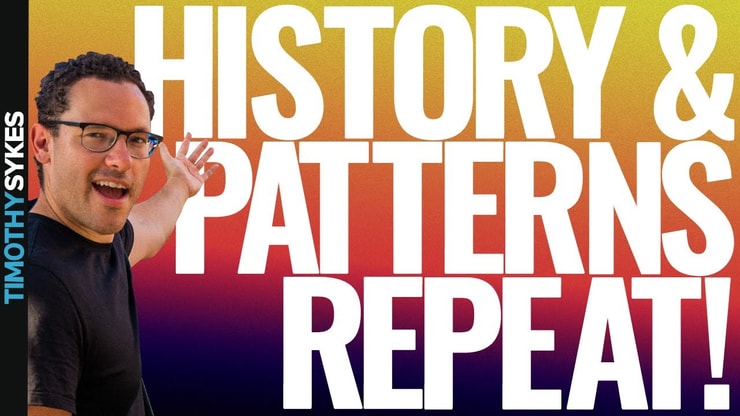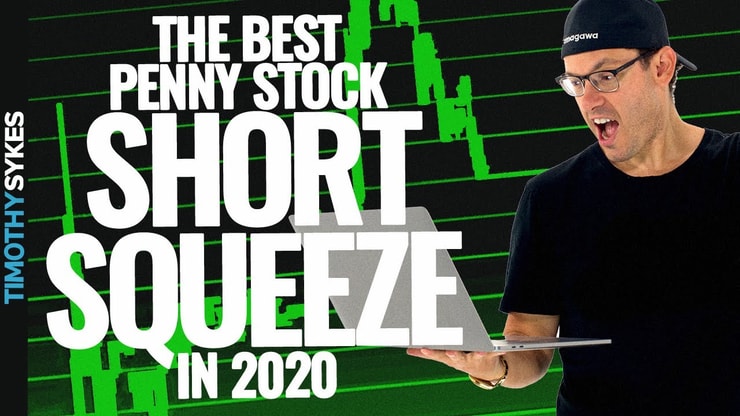I’m considered a successful trader. I’ve been trading penny stocks for over 20 years now, and I’m up over $5.5 million in profits.*
I think it’s the best job in the world. But it’s not about money for me anymore. I’m already rich — I don’t need more money. These days, I donate 100% of my trading profits to charity.
I primarily trade to teach. My goal is to teach my students how to trade penny stocks consistently. But I also want to show you what’s possible once you achieve financial freedom.
Recently, with my charity Karmagawa, I donated $1 million to the people of Yemen. Don’t miss the New York Post article about it.
I’m not quiet about the causes I support with my trading profits:
NEW NY POST ARTICLE ABOUT MY CHARITY'S $1 MILLION DONATION TO YEMEN! https://t.co/lbnDFWy13g Please share on $FB $TWTR everywhere, let's inspire more traders to give back to people in need too! GREAT work @karmagawa community, we did this TOGETHER! #teamwork #charity #helpyemen
— Timothy Sykes (@timothysykes) August 3, 2020
I love that trading lets me make a difference like this!
That said, not everyone is bound to find success as a trader.
I know. There are plenty of so-called trading gurus who tell a different story. Remember, if it sounds too good to be true, it probably is … There are a ton of scammers out there.
Table of Contents
What Every Potential Successful Trader Must Know
Take it from my newest millionaire student, Roland Wolf … becoming a successful day trader doesn’t happen overnight. It took him years to build his $4K account up to the million-dollar milestone — and lots of dedication.*
I can teach almost anyone the penny stock patterns that work for my students and me…
But I can’t teach anyone how to dedicate themselves to studying, learning, and improving every day. And I can’t teach them how to become obsessed with learning from their failures.
That’s up to you.
For those of you truly dedicated to bettering yourselves and who want to create your own definition of what a successful trader means, maybe you can learn from me.
But if you want me to tell you how to get rich quick…
You’ll be disappointed.
Let’s dig into what it takes to become a successful penny stock trader.
(*Please note: My results, along with the results of my top students, are far from typical. Individual results will vary. Most traders lose money. My top students and I have the benefit of many years of hard work and dedication. Trading is inherently risky. Do your due diligence and never risk more than you can afford to lose.)
NEVER Swing for Home Runs
For me, home runs are the trades where you make a lot more than you’re used to on a single trade.
The dollar value of these trades depends on your circumstances. For instance, my average winning trade is a little over $1,700.* A home run for me might be a $10,000 trade.*
Here’s the thing about home runs…
Every now and then, they happen. It’s a great feeling when they line up perfectly, but you shouldn’t get obsessed with only going for big wins. Home-run trades aren’t the definition of successful day trading.
I teach my students to always swing for singles. These trades are less flashy but potentially more consistent.
So why do so many traders want home-run trades? Because they’re driven by greed and only wanna get rich quick.
No matter how many times I tell new traders this, they still think they can become my next millionaire student — in a few months. It’s not realistic.
Luckily, most dedicated students realize how much work they need to put in to become a self-sufficient trader. Those are the types of students I want in my Trading Challenge.
I want students who are willing to put in the time and work. Those who are dedicated to learning how to trade stocks. I’m not interested in working with lazy losers who just want ‘hot stock’ tips.
No matter where you are in your trading career, always swing for singles. It’s how you can find consistency.
Plus, small gains can add up a lot faster than you might think.
Always Follow My #1 Rule…
Aiming for singles won’t help you be a successful trader if you don’t know how to control your losses.
This is one of the hardest things newbie traders face. Sometimes, new traders get lucky and make a lot of money on their early trades.
And that’s one of the worst things that can happen to a new trader. Why? Because then they only know what it feels like to win … They start to expect to win.
They don’t learn this extremely important rule…
If a trade isn’t working in my favor, I’m out. One big gain will never make you a great trader, but one huge loss could wipe out your entire trading account.
It’s what I teach to my students. When I learned to trade, I didn’t have a mentor. I had to learn the hard way.
I was winning a lot back when I decided to create a hedge fund. And one day I found myself in a big position in a stock that didn’t have enough volume for me to get out.
That loss ended up being about $500K. You can read about it in Chapter 13 of my autobiography, “An American Hedge Fund” — it’s no cost to download.
I learned my lesson with a half-million-dollar loss. Do you want to suffer that kind of loss to learn the same lesson?
That’s why cutting losses quickly is my number one rule. A trader who knows how to manage risk is on a smarter path to being a successful trader.
It’s simple math — keep winners bigger and losses smaller.
Know When to Size Up
Here’s another key for anyone who’s dedicated to becoming a successful trader: If you trade with a small account, it takes time to size up.
Sizing up means taking bigger positions in a trade.
No matter how many lessons I teach you … Or how much of a drill sergeant I am…
You will make mistakes. It’s part of the game. I still make mistakes. But you make a lot more mistakes when you’re first starting. That’s why I preach learning with small positions or even starting with paper trading.
Paper trading is a great way for new traders to learn the rules and patterns without risking real money.
Looking for a paper trading platform? Check out StocksToTrade.
STT is one of the best trading tools for trading. I use it every day to scan for the hottest penny stocks. More recently, I’ve been using the Breaking News Chat feature every day to find stocks that fit my go-to patterns.
If you want to paper trade, I highly suggest StocksToTrade’s paper trading platform. I don’t care how much you study my video lessons, DVDs, and webinars — it takes real-time trading to perfect what you’ve practiced.
Paper trading helps new traders acclimate to the feel and pace of live trading. Once you hone your strategy by paper trading, you can start small with real positions … And once you begin to find consistency, that’s when you can start sizing up.
Don’t rush it. Respect the process. Remember: it’s a marathon, not a sprint.
Tim Grittani: Sizing Up Intelligently
My top student Tim Grittani is arguably the TOP successful trader in the penny stock niche. He’s also a living example of starting small and sizing up over time.
This year, Grittani passed $13 million in trading profits.*
He’s made a lot more money than me! But then again, these days my main focus is trading to teach — and my profits go to charity.
Grittani took my advice of starting small to heart. Way back when he first started trading, he had tiny gains and losses on his trades…
There’s nothing wrong with that.
By learning how to trade small, Grittani eventually worked his way up as he became more confident in his trading style. I think that’s a smart way to learn.
Grittani is exactly what I look for in a student. I want all of my students to work as hard as he does. That means taking the time to build your knowledge account first.
Absolutely unbelievable series of events lol
1. Close $KODK short into fade yesterday, take last 30 min off
— Tim Grittani (@kroyrunner89) July 29, 2020
Grittani may be a millionaire now, but he didn’t make anything for his first nine months of trading.*
And that’s still a short time … Most of my students take a few years to find consistency. He was willing to put in the work. Get inspired to be like Grittani — study your butt off every day.
Students in my Trading Challenge can learn from Grittani, too. Of the 950 webinars in my library, Grittani did 70 of them. You can learn more about Grittani’s trading journey here.
Learn to Adapt
I can’t say this enough…
This market won’t stay this hot forever.
In June and July, we saw some crazy movers. Most were a result of promoters pumping penny stocks and aggressive short sellers getting squeezed.
I hope you’re learning from plays like this:
Bottom line: you’ve gotta be prepared. If you haven’t seen it, don’t miss my no-cost resource, “The Volatility Survival Guide.” It’s exactly what traders need to know to take advantage of opportunities in the current market.
But you’ve gotta know that eventually, the crazy market volatility will shift. There won’t be 100%+ runners day after day.
That’s also why it’s important to never follow alerts. So many newbies who want to get rich quick … They take the bait and follow promoters who promise amazing returns.
You might not get burned right away with this approach, but you will eventually. I want you to take a smarter approach.
By studying patterns that happen every day in the market, you’ll be better prepared for opportunities in any type of market — crazy volatile, slow, or anywhere in between.
There will always be another hot market. Study now and prepare for next time. For instance … I’m no genie or fortune teller, but it’s likely we’ll see another hot market when or if there’s a vaccine for COVID-19.
But the market will be different. Stocks that are in play right now might be irrelevant in the next hot market.
That’s why you’ve gotta focus on learning and understanding these patterns. Being a successful trader is more than just about following alerts — it’s about being self-sufficient.
More Breaking News
- SoFi Technologies Faces Uncertain Future After Downgrade
- Is It Time to Jump on INTZ’s Recent Stock Surge?
- Richtech Robotics’ Stock Rallies Due to CES 2025 Showcase: Time to Invest or Wait?
Join My 30-Day Bootcamp
My top student Matthew Monaco is an inspiration. Together, we put out the 30-Day Bootcamp. It’s a daily guide to get you on the right track to becoming a self-sufficient trader. Check out what Matt says about spending 30 days with me:
It’s true… stats don’t lie.
I finished my 30 days with Tim at the end of April. Then…
I made $48k in May, $93k in June & $50k in July.
And just passed $250k in total profits.
Coincidence? I think not…
Don’t miss this 🙌🏻
— Matthew Monaco 🚀 (@mono_trader) August 6, 2020
Quick note: 30 days is just a suggestion. You can work at your own pace. Wanna go fast? Plow through it all. Need more time? Take as much as you need. Watch the videos over and over until you get it.
What’s crucial is that you use this opportunity to learn — fundamentals, strategies and patterns, and more.
Get started with my 30-Day Bootcamp now.
What It Takes to Be a Successful Trader: Conclusion
I can’t see the future. Neither can any of my top students. We can’t tell you which way a stock will go.
But there are patterns from the past that help give you clues for how a stock might perform in the future.
By following my rules, like cutting losses quickly and only sizing up when you’re ready, you can work toward becoming a successful trader.
This hot market has helped groom a new crop of six-figure profit students* … The volatility helps, but it’s mainly because they’ve been preparing for years. They were ready for the opportunities in this insane market.
Are you ready to study and work hard to prepare for what’s next? I want students who are seriously dedicated to learning how to trade.
I’m looking for students who have the discipline to watch my video lessons, DVDs, webinars, and will work to hone in on their strategies.
There aren’t enough dedicated traders. Too many newbies want the next hot stock pick. That’s why so many newbies hate me — I’m not just giving you easy alerts to follow.
If you think you have what it takes to study hard to become a successful trader, consider applying to my Trading Challenge.
But no matter what, make sure you follow these rules and learn from my lessons. It’s helped my top students exceed in the 2020 market insanity.*
It all comes down to preparation. When you prepare, you’re ready for the opportunities that come your way — and that’s when you can enjoy the benefits of your hard work.
I wanna know — what’s your biggest barrier to becoming a successful trader? Let me know in the comments below!








Leave a reply